"Venice"
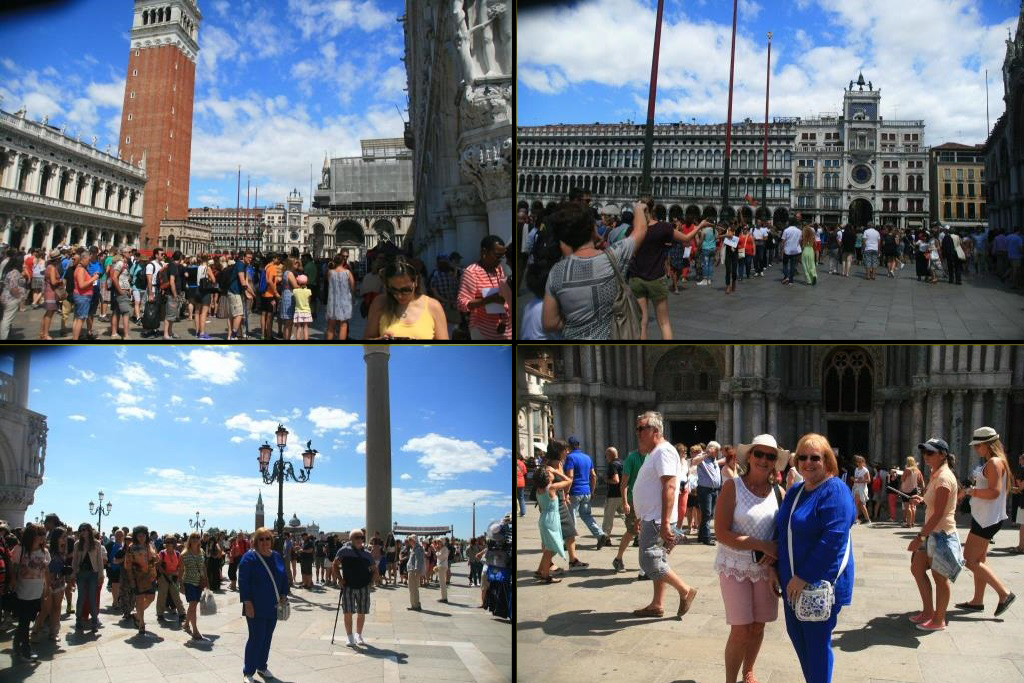 Our first trip out from Garda was to Venice; we had already visited Venice on two previous occasions so new pretty well what to expect. There is no doubt it is a must see place for any tourist but for myself this will definitely be the last time I go there. It's simply too commercialised and very expensive, especially if you eat in the more public places; there are some relatively inexpensive restaurants and bars in the back streets which we look for and prefer. We were dropped off on the promenade adjacent to the Grand Canal, known as the Riva degli Schiavoni, and like most visitors we walked to St Mark's Square (Piazza San Marco) which together with the adjacent Piazzetta (little Square) form the social, religious and political centre of Venice.
Our first trip out from Garda was to Venice; we had already visited Venice on two previous occasions so new pretty well what to expect. There is no doubt it is a must see place for any tourist but for myself this will definitely be the last time I go there. It's simply too commercialised and very expensive, especially if you eat in the more public places; there are some relatively inexpensive restaurants and bars in the back streets which we look for and prefer. We were dropped off on the promenade adjacent to the Grand Canal, known as the Riva degli Schiavoni, and like most visitors we walked to St Mark's Square (Piazza San Marco) which together with the adjacent Piazzetta (little Square) form the social, religious and political centre of Venice.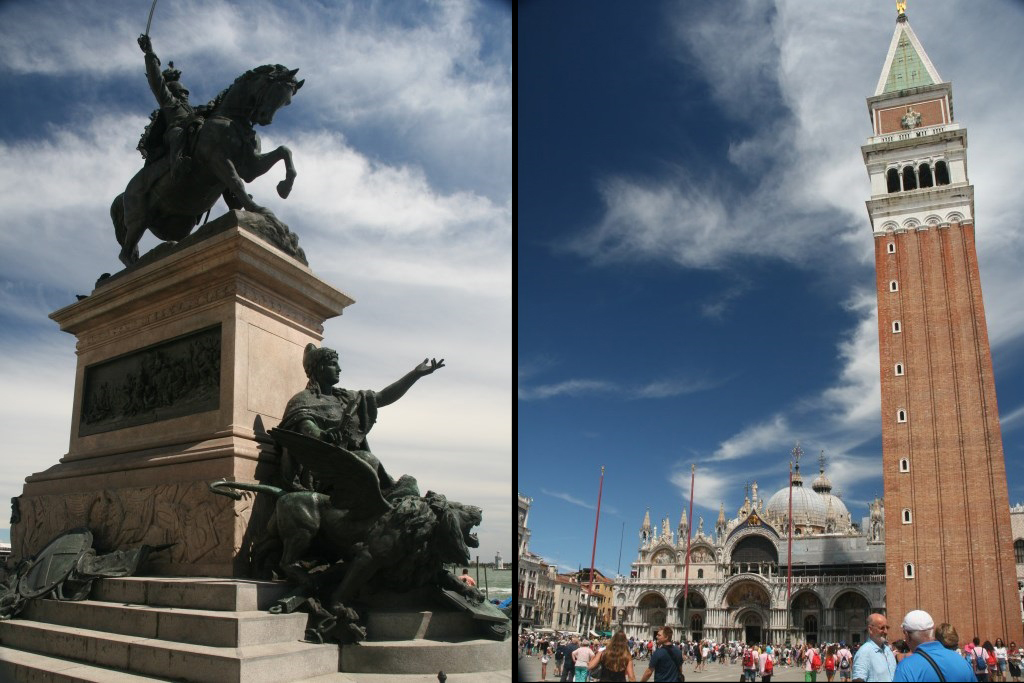 The monument to Vittorio Emanuelle II, the first king of Italy, is situated on the Riva degli Schiavoni and the Camponile in St Marks Square; the camera angle has exaggerated the 'lean' but it is a little known fact that there are in fact 11 leaning towers in Italy, of which the Camponile in St Mark's Square is one (albeit not a serious lean) and worldwide over 70 leaning towers.
The monument to Vittorio Emanuelle II, the first king of Italy, is situated on the Riva degli Schiavoni and the Camponile in St Marks Square; the camera angle has exaggerated the 'lean' but it is a little known fact that there are in fact 11 leaning towers in Italy, of which the Camponile in St Mark's Square is one (albeit not a serious lean) and worldwide over 70 leaning towers.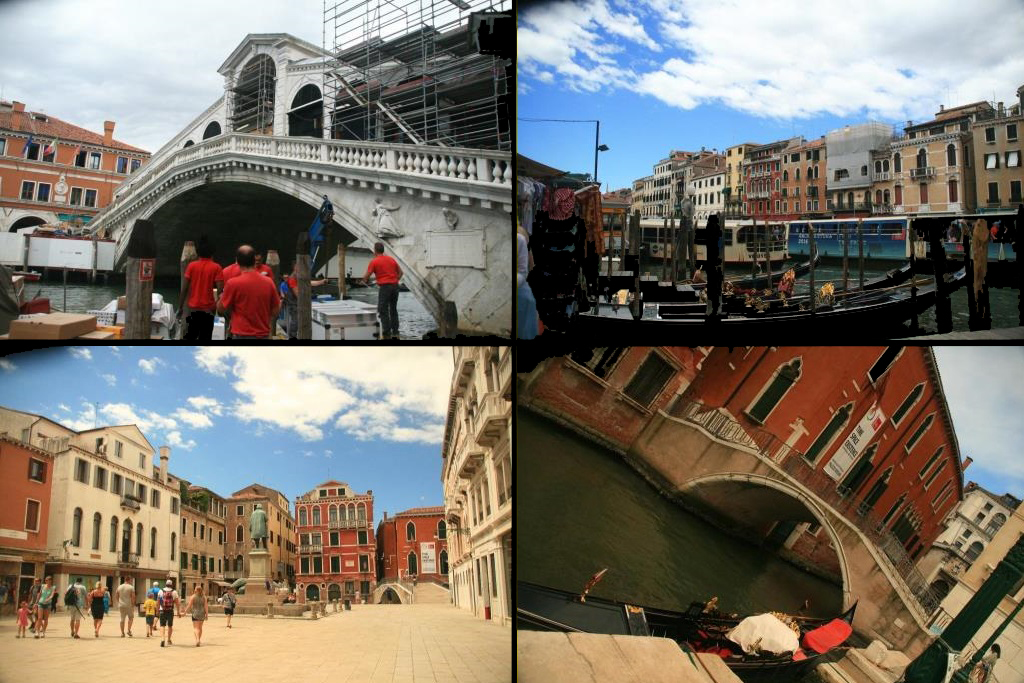 Fortunately we have been to Venice before but would have been very disappointed if this was our first visit to find that the Rialto Bridge, surely a highlight of Venice, was under repair and it was not possible to stand on the outside of the bridge and look over the edge both up and down the Grand Canal. In our Picture Book Italy blog, we have taken pictures from the bridge so we were not so worried that this time we were not able to do this. This part of the Grand Canal is very busy with boats of all types and purposes sailing up and down. The boats that can be seen outside the gondolas are known as Vaporetto's which are water buses that carry passengers to places throughout Venice; traveling the canals is the easiest and most cost-effective way to get around the city, apart from walking.
Fortunately we have been to Venice before but would have been very disappointed if this was our first visit to find that the Rialto Bridge, surely a highlight of Venice, was under repair and it was not possible to stand on the outside of the bridge and look over the edge both up and down the Grand Canal. In our Picture Book Italy blog, we have taken pictures from the bridge so we were not so worried that this time we were not able to do this. This part of the Grand Canal is very busy with boats of all types and purposes sailing up and down. The boats that can be seen outside the gondolas are known as Vaporetto's which are water buses that carry passengers to places throughout Venice; traveling the canals is the easiest and most cost-effective way to get around the city, apart from walking.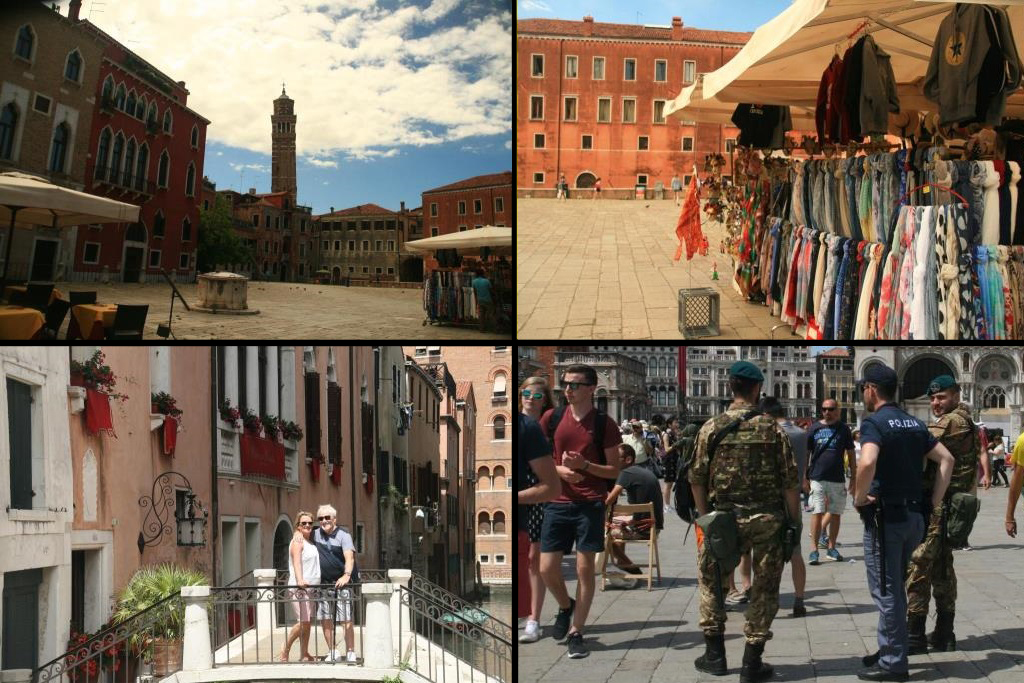 In reality the only way to see Venice is to walk as there are many small squares, known as campo such as the Campo San Stefano which has the statue of Niccolò Tommaseo, a 19th-century Italian writer, in the middle (previous slide) and the Campo San Anzolo which has a busy market and the leaning Campanile of San Stefano church in the corner. There was also an obvious presence of both police and armed military guards in St Mark's Square, perhaps a reaction to the recent terrorist activities; I haven't seen this level of policing in previous visits. And of course everywhere you go there are bridges across the canals which is all part of the character of Venice.
In reality the only way to see Venice is to walk as there are many small squares, known as campo such as the Campo San Stefano which has the statue of Niccolò Tommaseo, a 19th-century Italian writer, in the middle (previous slide) and the Campo San Anzolo which has a busy market and the leaning Campanile of San Stefano church in the corner. There was also an obvious presence of both police and armed military guards in St Mark's Square, perhaps a reaction to the recent terrorist activities; I haven't seen this level of policing in previous visits. And of course everywhere you go there are bridges across the canals which is all part of the character of Venice.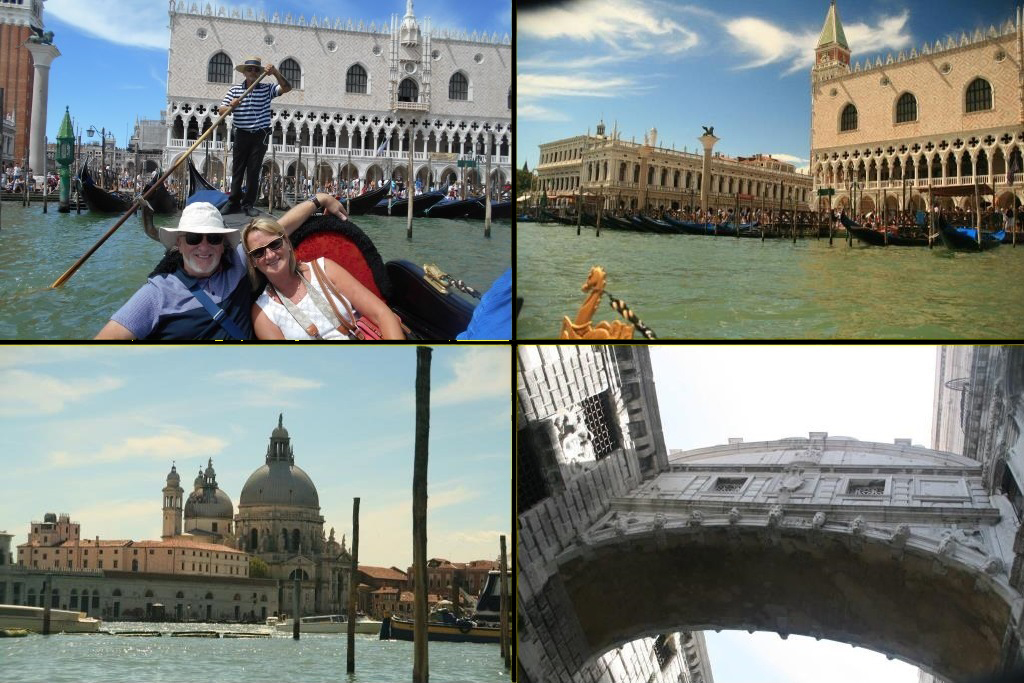 As this is probably our last visit to Venice and we haven't done so before but this time we thought our 'Venice experience' wouldn't be complete until we had been on a gondola; in the past the cost has put us off. So we eventually settled on a ride in one of the gondolas on the Riva degli Schiavoni lined up outside the Doge Palace, which are in fact the most expensive as far as I could see in Venice (120 Euros between the four of us).
As this is probably our last visit to Venice and we haven't done so before but this time we thought our 'Venice experience' wouldn't be complete until we had been on a gondola; in the past the cost has put us off. So we eventually settled on a ride in one of the gondolas on the Riva degli Schiavoni lined up outside the Doge Palace, which are in fact the most expensive as far as I could see in Venice (120 Euros between the four of us).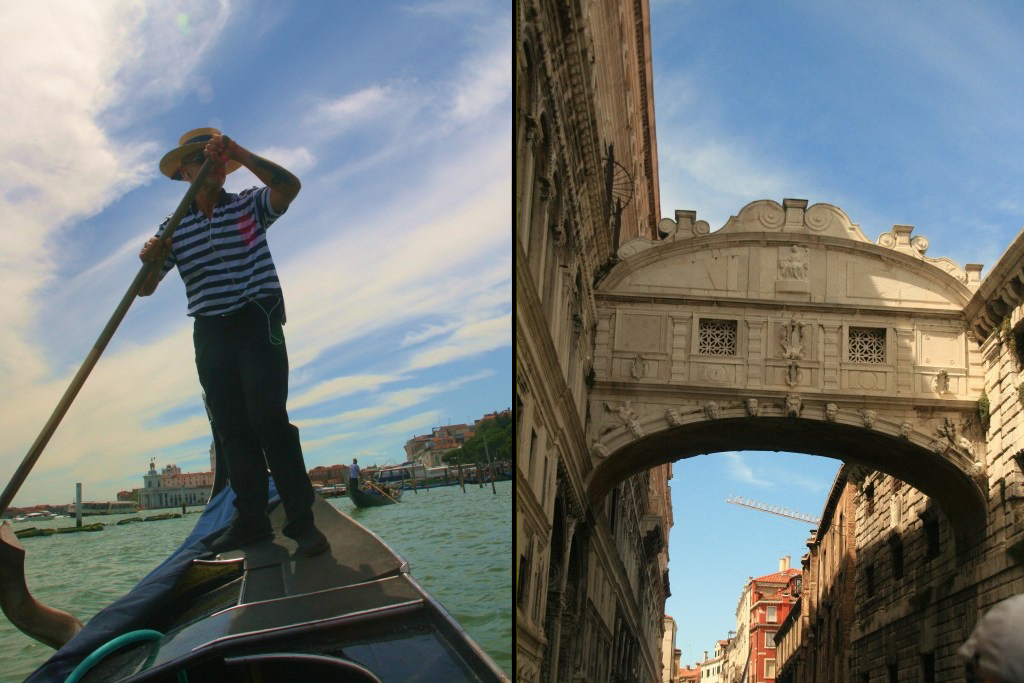 The ride took about 30 minutes and consisted of a circular route under the Bridge of Sighs round behind the Doge Palace and back under the Bridge of Sighs on to the waterfront. We resisted the temptation to sing 'one cornetto' although I had great difficulty in gagging Jane; I'm sure the gondoliers get fed up with being asked to sing the song made famous on TV.
The ride took about 30 minutes and consisted of a circular route under the Bridge of Sighs round behind the Doge Palace and back under the Bridge of Sighs on to the waterfront. We resisted the temptation to sing 'one cornetto' although I had great difficulty in gagging Jane; I'm sure the gondoliers get fed up with being asked to sing the song made famous on TV.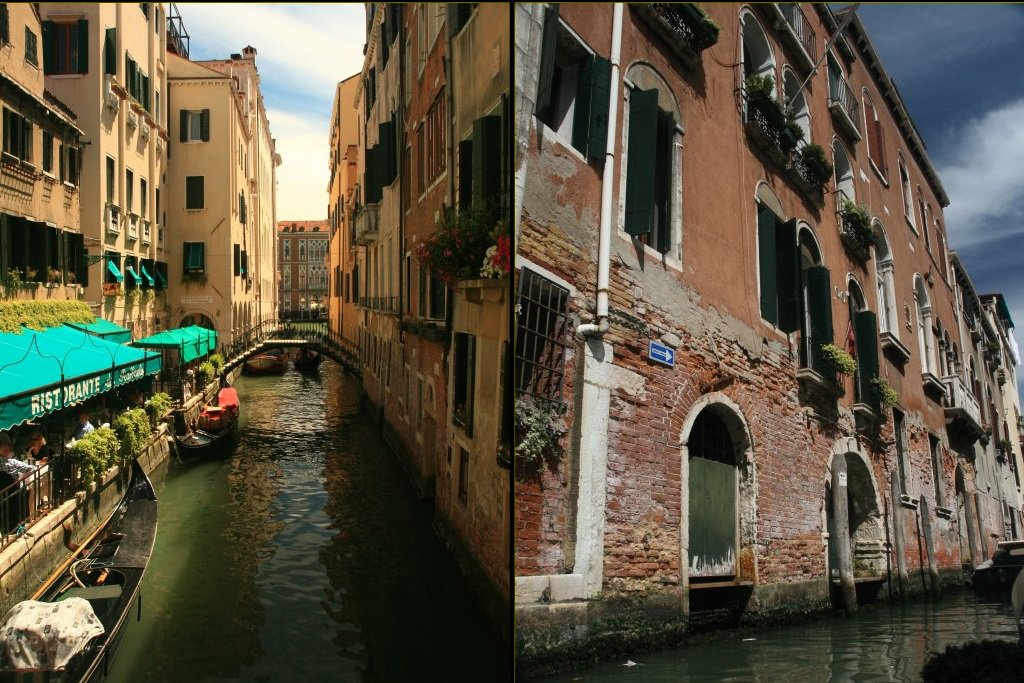 It was quite an eye-opener to see how dilapidated the walls of the buildings are as you ride round the canals in the gondoler where you see them much closer up. It's not surprising that people are moving out of Venice as the cost of living there and the upkeep of the houses must be sky high, and you are never far away from the flooding that occurs during the winter months (waters regularly rise above 130cm). In spite of rising water levels and the city slowly sinking (2 cms/year) people try to carry on as normal and were glad to see the final stages of Venice’s Mose flood barrier project being completed last summer (2015) as the gates arrived and were inserted into their concrete foundations on the bed of the Venetian lagoon. The gates work on a simliar principle to the London Barrier.
It was quite an eye-opener to see how dilapidated the walls of the buildings are as you ride round the canals in the gondoler where you see them much closer up. It's not surprising that people are moving out of Venice as the cost of living there and the upkeep of the houses must be sky high, and you are never far away from the flooding that occurs during the winter months (waters regularly rise above 130cm). In spite of rising water levels and the city slowly sinking (2 cms/year) people try to carry on as normal and were glad to see the final stages of Venice’s Mose flood barrier project being completed last summer (2015) as the gates arrived and were inserted into their concrete foundations on the bed of the Venetian lagoon. The gates work on a simliar principle to the London Barrier. 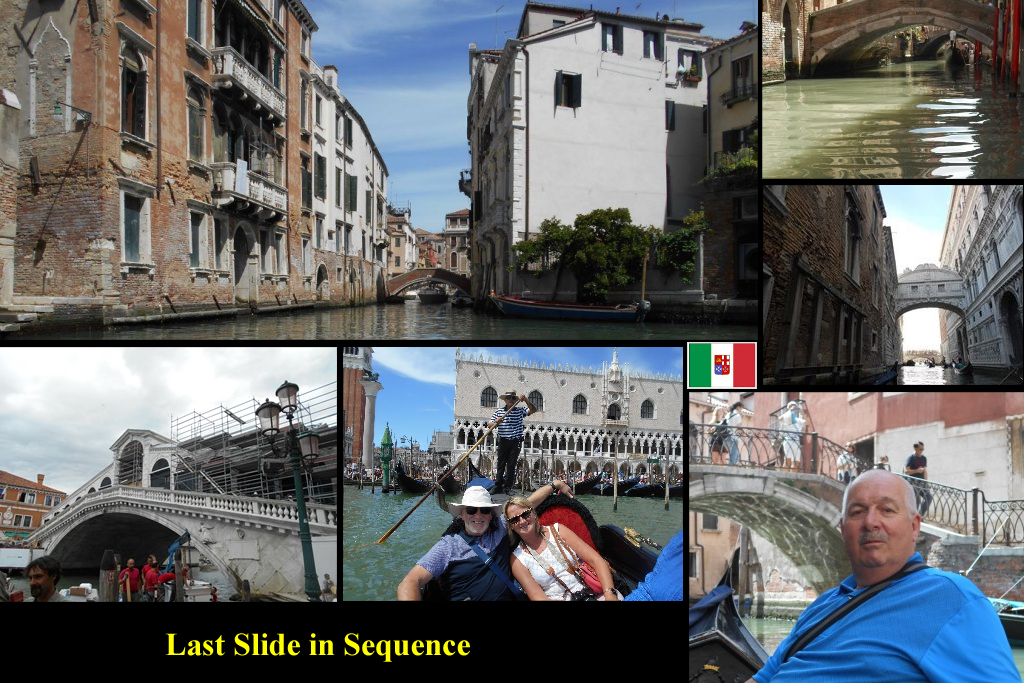 I think we are all 'Veniced' out now having been there as a group two times, as a couple three times and as myself four times!! The problem with Venice is not the city which is stunning although falling apart and sinking fast but the cost of going there; we paid 120 euros to get a gondoler from the waterfront (I know it's a bit cheaper from the backstreets) and drinks are very expensive, and there are so many touristss it's almost uncomfortable to find your way about. Also, if I had been there for the first time I would have been very disappointed to see the Rialto bridge under repair with scaffolding preventing you from standing at the edges looking down the Grand Canal. Fortunately we have seen the bridge in all its glory and it didn't worry us too much. I think it's a place everyone should go there once in a lifetime but check there aren't any major repair works going on as this is a virtually constant activity.
I think we are all 'Veniced' out now having been there as a group two times, as a couple three times and as myself four times!! The problem with Venice is not the city which is stunning although falling apart and sinking fast but the cost of going there; we paid 120 euros to get a gondoler from the waterfront (I know it's a bit cheaper from the backstreets) and drinks are very expensive, and there are so many touristss it's almost uncomfortable to find your way about. Also, if I had been there for the first time I would have been very disappointed to see the Rialto bridge under repair with scaffolding preventing you from standing at the edges looking down the Grand Canal. Fortunately we have seen the bridge in all its glory and it didn't worry us too much. I think it's a place everyone should go there once in a lifetime but check there aren't any major repair works going on as this is a virtually constant activity.